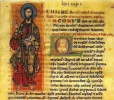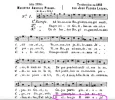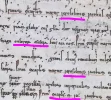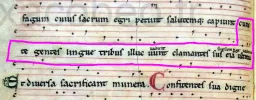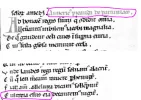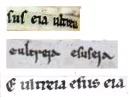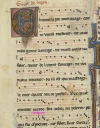NobleSpaniard
Member
- Time of past OR future Camino
- Camino Portugués (June 2018)
Buen Camino!
I've been trying to track down the legitimacy of the Ultreïa spelling, and thought perhaps someone here had already done so.
I understand that Ultreia and Ultreya are the two modern spellings of the word. But I have also seen it spelled Ultreïa in several places, and was wondering about the roots of this spelling.
Did the common Latin spelling of the word include the dieresis? Is it a legitimate Old English spelling? Or is it just something that some people have added, for character, to convey the archaic nature of the word in a way that is more graphically pleasing to the average hipster?
I have been working on a tattoo which I intend to get, and included the dieresis in my latest incarnation. My cousin from Sevilla says that the diéresis are not used, and that only Ultreia or Ultreya are correct. I understand that a tattoo is a personal decision, and that I should do whatever makes me happy. But, at the moment, finding out the legitimacy/origins of the Ultreïa spelling is what makes me happy.
So, I've been trying to find the word in images from an early version of the (or the original) Codex Calixtinus, but have thus far been unable to do so. I know it can be found in Chapter XXVI of Book I, but that is as far as I've gotten. I can only find translations, in various languages, on various websites, and neither an image of the text nor any commentary on how it is written originally.
Does anyone else have any input on the origins/legitimacy of spelling Ultreïa with dieresis, and/or how it was spelled in the Codex Calixtinus manuscript?
Thank you!
I've been trying to track down the legitimacy of the Ultreïa spelling, and thought perhaps someone here had already done so.
I understand that Ultreia and Ultreya are the two modern spellings of the word. But I have also seen it spelled Ultreïa in several places, and was wondering about the roots of this spelling.
Did the common Latin spelling of the word include the dieresis? Is it a legitimate Old English spelling? Or is it just something that some people have added, for character, to convey the archaic nature of the word in a way that is more graphically pleasing to the average hipster?
I have been working on a tattoo which I intend to get, and included the dieresis in my latest incarnation. My cousin from Sevilla says that the diéresis are not used, and that only Ultreia or Ultreya are correct. I understand that a tattoo is a personal decision, and that I should do whatever makes me happy. But, at the moment, finding out the legitimacy/origins of the Ultreïa spelling is what makes me happy.
So, I've been trying to find the word in images from an early version of the (or the original) Codex Calixtinus, but have thus far been unable to do so. I know it can be found in Chapter XXVI of Book I, but that is as far as I've gotten. I can only find translations, in various languages, on various websites, and neither an image of the text nor any commentary on how it is written originally.
Does anyone else have any input on the origins/legitimacy of spelling Ultreïa with dieresis, and/or how it was spelled in the Codex Calixtinus manuscript?
Thank you!













